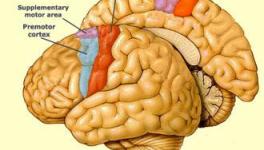Singing Mouse’s Brain Circuit Could Reveal How Human Brains Hold Conversation

Image Courtesy: Science Magazine. Image for representational use only
Conversation may appear as usual a phenomenon as breathing to many of us, but for neuroscientists it has been a long struggle to understand how our brains function during conversations. The lack of a suitable animal model to perform this research has been a longstanding problem that the neuroscientist community has faced. Most of the laboratory animal models like mouse etc. lack the verbal complexity needed for conversation.
But the latest discovery of the brain circuit engaged in the conversation process of the singing mouse could shed new light on brain functioning of conversation, especially in mammals including humans. This singing mouse is found in the cloud forests of Costa Rica.
In human conversations we listen to the words of the other person, and then we plan our own words in the mind, adjust them and then deliver them at a socially appropriate moment. Lots of things happen during this period—working of the mind, movement of vocal muscles and directing them. Most of the lab animal models lack this improvised skill of conversation. Even marmosets, the primates that can make back and forth calls that make them popular in neuroscience research, make pauses of several seconds between responses. We can’t even imagine a conversation between two persons where there is a gap of several seconds each time one responds to the other.
This makes the singing mouse special, it can precisely time its own song to avoid overlap with the neighbour. It starts about half a second after the other mouse finishes. In humans, this lag period is even shorter—roughly 200 milliseconds on an average.
For this reason, Costa Rica’s singing mouse has become an attraction for the neuroscientists. Michael Long of New York University School of Medicine along with his colleagues tried to find out how the mouse’s brain could carefully perform the coordinated task of timely exchanges of responses.
What is already found in many studies is that the subcortical structure, an evolutionary ancient and a deep brain part is involved in animal vocalisations. Long’s team wondered whether other higher brain activity involving a more developed brain region—the motor cortex—was associated in the case of the singing mouse’s vocal capability. The motor cortex was thought to act like an orchestra conductor that could direct the response to be on or off based on social cues.
Long’s team found numerous evidences in their exploration that could support their intuition. First, they found out that the part of the brain known as orofacial motor cortex (OMC), when stimulated, caused the singing mouse to flex its vocal muscles. They put a cooling device over the OMC to slow down its neural activity and found that the mouse took much longer to complete its song. Moreover, to their surprise, when they deactivated the OMC completely by applying certain drugs, the mouse could still sing. This gave them a hint that vocalisations were produced somewhere else in the brain. But deactivating the OMC made the mouse less responsive towards another mouse’s song. They concluded that in carrying out the vocal turn-taking in conversations, the mouse’s brain divides work between a basic song generator, which they are yet to discover with precision in the subcortical brain, and a higher-level conductor.
Human conversation is much more complicated than that of the singing mice and Long’s team now wants to extrapolate their findings to the human brain. This is to study a comparable timing mechanism in the motor cortex of human, which is known to be involved in speech control. His team is now busy in designing experiments that could record brain activity during conversations, especially to find out brain functioning in responding quickly to another voice.
Long’s study could also open up new possibilities to study autism—a disorder where the ability of communication is hindered. "We need to understand how our brains generate verbal replies instantly using nearly a hundred muscles if we are to design new treatments for the many Americans for whom this process has failed, often because of diseases such as autism or traumatic events, like stroke," said Long to Science Daily.
Get the latest reports & analysis with people's perspective on Protests, movements & deep analytical videos, discussions of the current affairs in your Telegram app. Subscribe to NewsClick's Telegram channel & get Real-Time updates on stories, as they get published on our website.
















